
The occupation of Iraq (2003–2011) began on 20 March 2003, when the United States invaded with a military coalition to overthrow Iraqi president Saddam Hussein and his Arab Socialist Ba'ath Party, and continued until 18 December 2011, when the final batch of American troops left the country. While the United States, the United Kingdom, and Australia were the largest contributors to the coalition, 29 other countries, such as Japan, were involved in the Iraq War in a lesser capacity. Additionally, several private military contractors took part in enforcing the occupation.
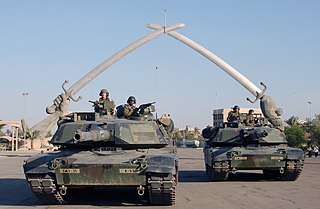
The following is a timeline of major events during the Iraq War, following the 2003 invasion of Iraq.
Events in the year 2004 in Iraq.
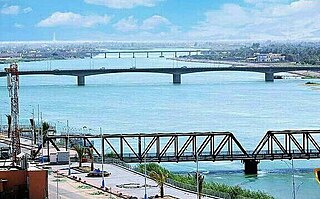
Fallujah is a city in Al Anbar Governorate, Iraq. Situated on the Euphrates River, it is located roughly 69 kilometres (43 mi) to the west of the capital city of Baghdad and 50 kilometres (31 mi) from the neighboring city of Ramadi. The city is located in the region defined as Sunni Triangle by the United States, as majority of its residents are Arabic-speaking Sunni Muslims. In 1947, Fallujah was a small town with a relatively small population but had grown to a population of about 250,900 people by 2018.
Fabrizio Quattrocchi was an Italian mercenary taken hostage and subsequently murdered by insurgents in the Iraq War.
Margaret Hassan was an Irish aid worker who had worked in Iraq for many years until she was abducted by unidentified assailants in Baghdad during the Iraqi insurgency. Her captors subsequently filmed and released a video of her stating that she was living her "last hours" before she pleaded for the withdrawal of British troops from Iraq; she has not been seen since, and her remains were never recovered.
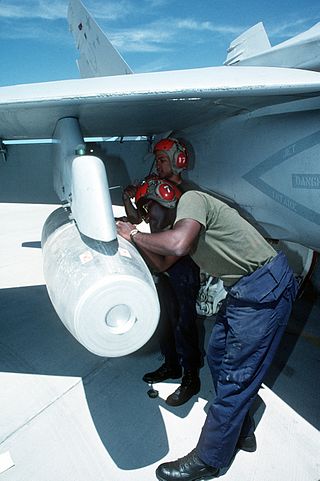
The Mark 77 bomb (MK-77) is a United States 750-pound (340 kg) air-dropped incendiary bomb carrying 110 U.S. gallons of a fuel gel mix which is the direct successor to napalm.
Events in the year 2005 in Iraq.
Nicola Calipari was an Italian major general and SISMI military intelligence officer. Calipari was accidentally killed in Iraq by American soldiers while escorting a recently released Italian hostage, journalist Giuliana Sgrena, to Baghdad International Airport.
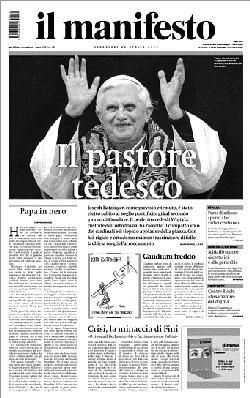
il manifesto is an Italian daily newspaper published in Rome, Italy. While calling itself "communist" and broadly left-wing, it is not connected to any political party.
Mario Lozano is a United States Army specialist, best known for once being indicted by an Italian court for his role in the death of Italian Secret Service officer Nicola Calipari in a supposed incident on Route Irish, immediately following the rescue of Giuliana Sgrena. Lozano was not the only American soldier involved in this incident, but received much more attention because he was the one who fired the machine gun killing Calipari. He was assigned to the 1st Battalion of the 69th Infantry Regiment, 42nd Infantry Division of the New York Army National Guard, based in Manhattan.
Members of the Iraqi insurgency began taking foreign hostages in Iraq beginning in April 2004. Since then, in a dramatic instance of Islamist kidnapping they have taken captive more than 200 foreigners and thousands of Iraqis; among them, dozens of hostages were killed and others rescued or freed. In 2004, executions of captives were often filmed, and many were beheaded. However, the number of the recorded killings decreased significantly. Many hostages remain missing with no clue as to their whereabouts. The United States Department of State Hostage Working Group was organized by the U.S. Embassy, Baghdad, in the summer of 2004 to monitor foreign hostages in Iraq.

On 4 March 2005, the Italian military secret service, SISMI, conducted a covert operation to rescue Italian journalist Giuliana Sgrena from kidnappers in Iraq. After the successful retrieval of Sgrena, the car with her and two secret agents came under friendly fire by US Army troops along the Baghdad airport road; secret agent Nicola Calipari was killed by US Army Specialist Mario Lozano. The incident created tension between the two countries, and arguably increased the Italian public's hostility towards the United States.
Fallujah, The Hidden Massacre is a documentary film by Sigfrido Ranucci and Maurizio Torrealta which first aired on Italy's RAI state television network on November 8, 2005. The film documents the use of chemical weapons, particularly the use of incendiary bombs containing white phosphorus, and alleges that insurgents and civilians, including children, had been killed or injured by chemical burns by military forces of the United States of America in the city of Fallujah in Iraq during the Fallujah Offensive of November 2004.
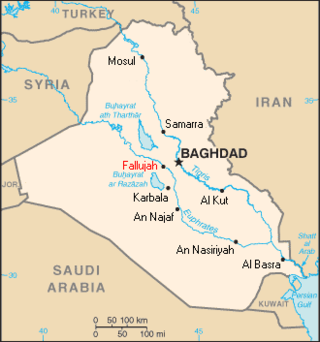
The United States bombardment of Fallujah began in April 2003, one month after the beginning of the invasion of Iraq. In April 2003 United States forces fired on a group of demonstrators who were protesting against the US presence. US forces alleged they were fired at first, but Human Rights Watch, who visited the site of the protests, concluded that physical evidence did not corroborate US allegations and confirmed the residents' accusations that the US forces fired indiscriminately at the crowd with no provocation. 17 people were killed and 70 were wounded. In a later incident, US soldiers fired on protesters again; Fallujah's mayor, Taha Bedaiwi al-Alwani, said that two people were killed and 14 wounded. Iraqi insurgents were able to claim the city a year later, before they were ousted by a siege and two assaults by US forces. These events caused widespread destruction and a humanitarian crisis in the city and surrounding areas. As of 2004, the city was largely ruined, with 60% of buildings damaged or destroyed, and the population at 30%–50% of pre-war levels.

The Abu Omar Case was the abduction and transfer to Egypt of the Imam of Milan Hassan Mustafa Osama Nasr, also known as Abu Omar. The case was picked by the international media as one of the better-documented cases of extraordinary rendition carried out in a joint operation by the United States' Central Intelligence Agency (CIA) and the Italian Military Intelligence and Security Service (SISMI) in the context of the global war on terrorism declared by the George W. Bush administration.
Paul Taggart is an American photographer and writer best known for his photographs from the Middle East and Africa.

Iraqi–Italian relations are the interstate ties relations between Iraq and Italy. Iraq has an embassy in Rome and Italy had an embassy in Baghdad and a consulate-general in Basra.
Tara Sutton is a Canadian journalist and filmmaker whose work in conflict zones has received many awards. She was one of the first international television correspondents to both produce and shoot their own reports and is a pioneer in the field of "video journalism".









